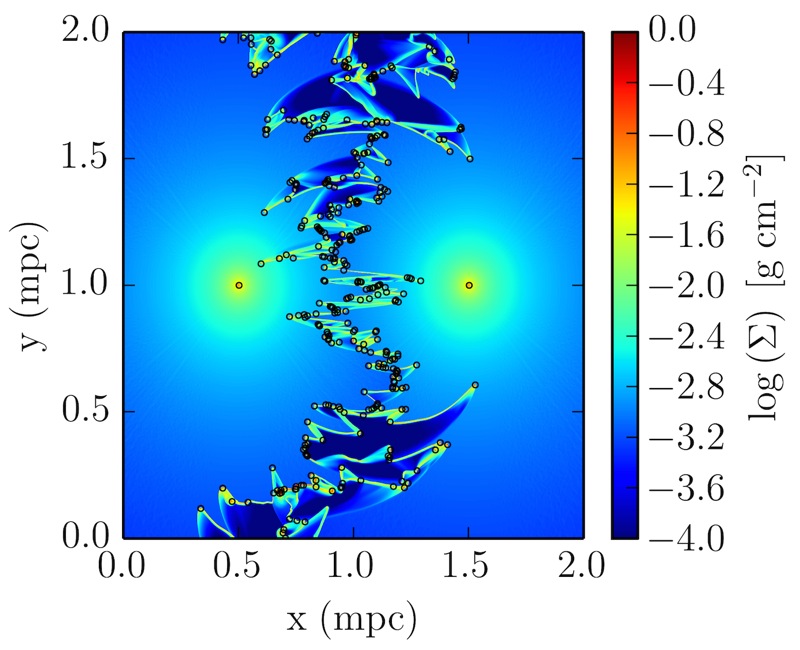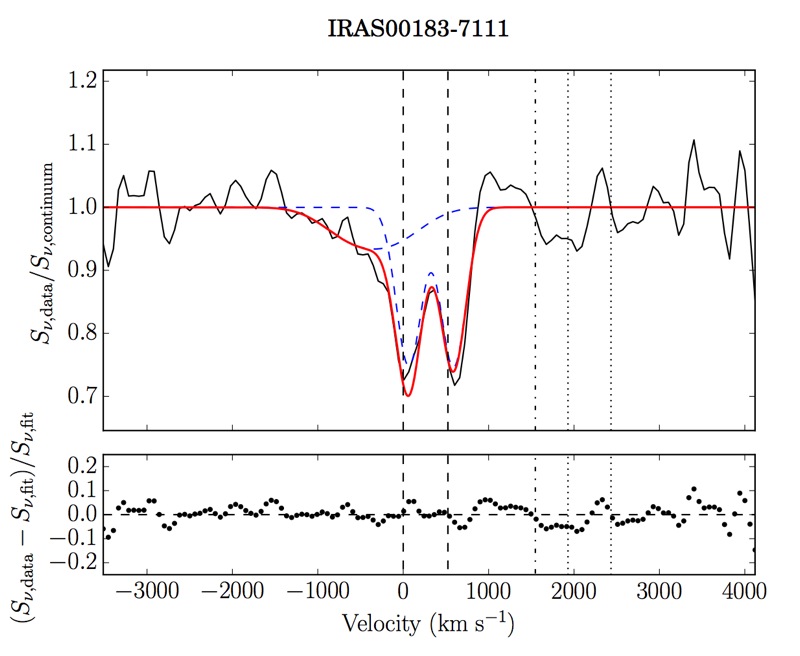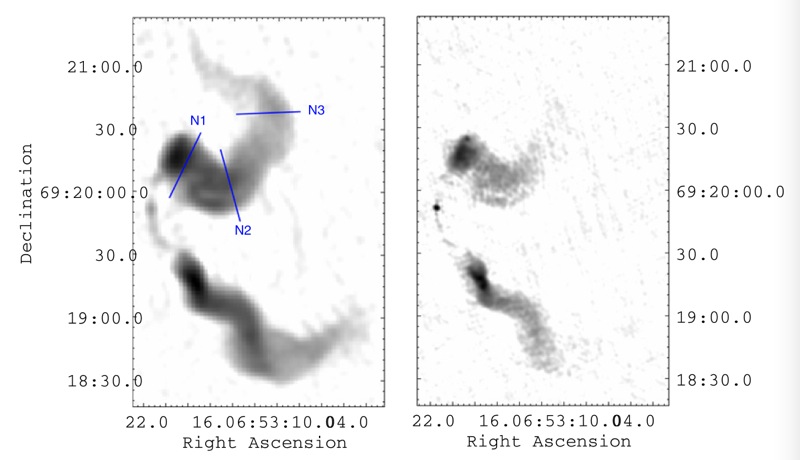Galactic Centre
The inner parsec of the Milky Way hosts tens of Wolf-Rayet stars. Their strong mass outflows fill the region with hot plasma. A fraction of this gas is expected to be accreted by the central super-massive black hole, Sgr A*. The main goal of this work is to improve our understanding of the accretion onto Sgr A*. In this context, I am studying the impact of stellar wind interactions on the accretion. To do so, I am modelling unstable colliding wind systems. The hydrodynamic instabilities could generate cold, dense clumps in these systems which could end up being accreted. The clumps could provide the bulk of the accretion and cause its variability episodes. I am making use of both analytic and numerical adaptive mesh refinement (AMR) hydrodynamic tools to build my models.

Surface density map of a simulation of a colliding wind system. Black circles indicate detected clumps formed through hydrodynamic instabilities.
Active galactic nuclei
It is well-understood that the active galactic nucleus (AGN) phase plays a crucial role in galaxy evolution. The growth of the central super-massive black holes and the quenching of the star formation is intimately related to the AGN activity. Lately, I have been searching for direct evidence of AGN feedback in galaxies. I have been studying the most powerful luminous infrared galaxies, the so-called Hyper-Luminous Infrared Galaxies (HLIRGs). Using Herschel/PACS data I have been constraining molecular outflows through the 119 μm OH doublet.

Smoothed Herschel/PACS spectrum of the 119 μm doublet divided by its continuum. The blueshifted wing of the profile indicates the presence of a molecular outflow (Calderón et al. 2016).
Clusters of galaxies
The largest structures in the universe are the clusters of galaxies. They are composed mainly by dark matter, intracluster gas and galaxies. In general, their centres host a fairly massive cD galaxy. Some of them show strong AGN activity imprinted in powerful kiloparsec-scale radio jets. Although it is common observing them relatively well-collimated, there are cases where they are significantly bent. These "wide-angle tail" radio sources may be generated due to the interaction of the radio jets and the intracluster medium. In this context, I have studied the dynamics of the cluster of galaxies Abell 562 using Gemini/GMOS multi-object spectroscopy data. Our results support the hypothesis that the WAT in Abell 562 may be explained by a cluster of galaxies merger that is taking place.

VLA 1.4 GHz (left) and 8.4 GHz (right) maps of the WAT hosted by Abell 562 (Douglass et al., 2016, ApJ, 743, 199)